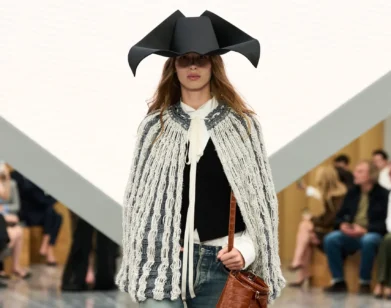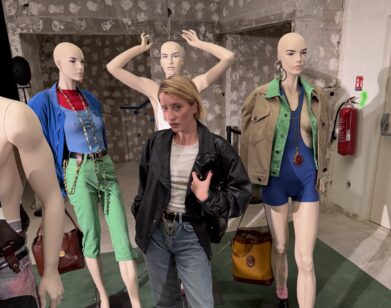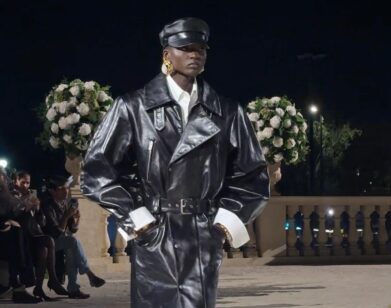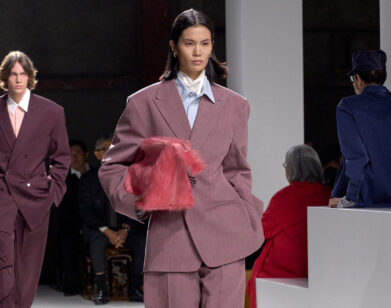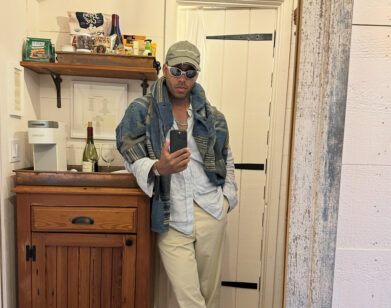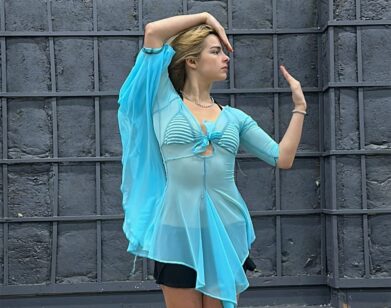Faith Kates
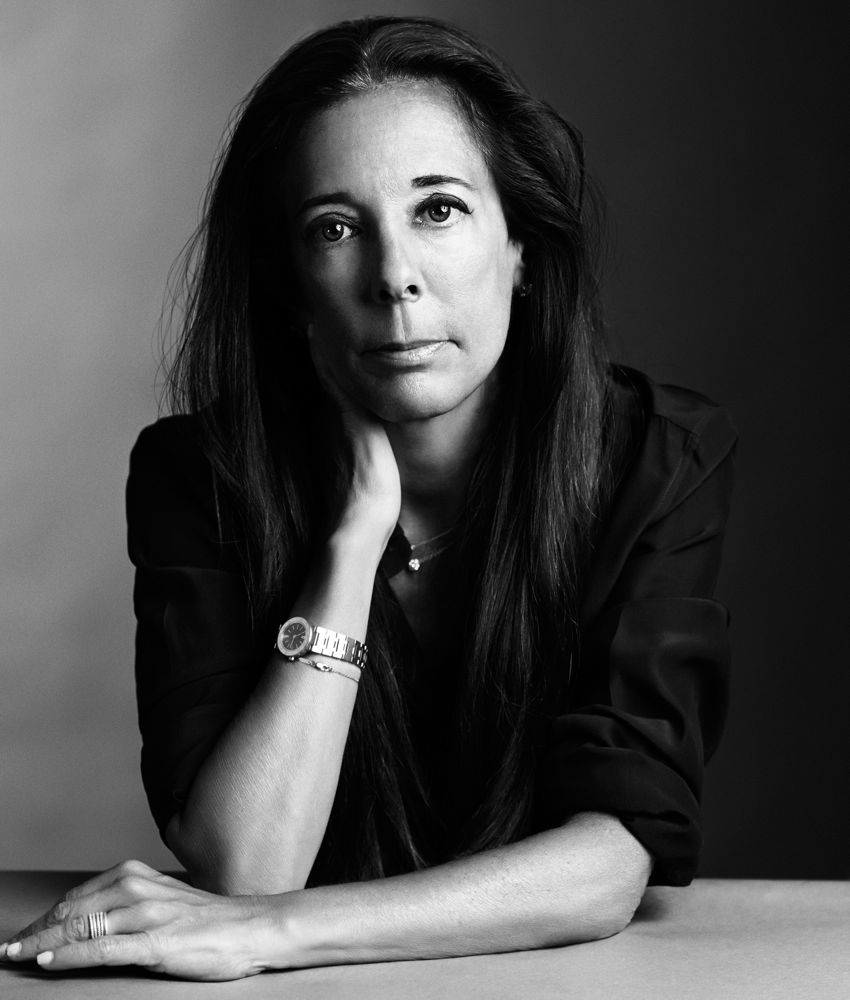
I never say anything bad about my friends. Never. That’s why I’m friends with everyone. Faith Kates
DAVID COLMAN What was your plan?
FAITH KATES: I didn’t have a plan. I was an assistant in the casting department at an advertising agency. The casting director quit two weeks after I started, so I sort of figured it out on my own. Then I went to work for a production company that represented Hiro and [Richard] Avedon, and I met a lot of people from fashion. I loved the fashion world. I went for an interview at Wilhelmina in 1981 and wound up taking the job. They told me, “It can take six months to book a job,” but in about six minutes I booked my first job. I thought, “Okay, this is kind of easy and fun.” I went on to run the fashion show division—I had never seen a fashion show—and wound up running the women’s division there.
COLMAN Who were the girls you started with?
KATES: Kim Alexis, Beverly Johnson, Patti Hansen, Shaun Casey, Cindy Harrell … That was my original generation of girls. We went on to represent unbelievable girls. It’s very funny that most of the people who are still working today are people I met when I first started in the business—Patrick Demarchelier, Bruce Weber, Mario Testino, Steven Meisel. My earliest memories of these guys were of us going out every night. We were young. They got up in the morning and took pictures. I got up in the morning and went to work.
COLMAN Where did you go out at night?
KATES: We would have dinner before going out to Xenon or Studio 54—places like that. You’d stay out all night, go home to take a shower, and go to work. That’s the way it was. The models would go to dinner at Jim McMullen’s, because nobody had money to pay for food, and Jim was the only one who would feed you for free. Jim McMullen had been a model in the ’70s and opened the first cool model-y hangout restaurant on Third Avenue and 77th Street.
COLMAN What’s the difference between then and now?
KATES: It’s all different. When a girl cancels today, it’s different. Back then, we had no cell phones, and some of the girls wouldn’t answer the phone. Patti Hansen and Shaun Casey lived in the building on 10th Street and Fifth Avenue, and we would call the doorman when they didn’t show up to work. He’d say, “Call me back in five minutes.” So we’d call back, and he would say, “Not today.” We would laugh. He was our connection to knowing what was going on. But today is different because of the amount of money—there is so much more riding on the line now than there was then.
COLMAN Right, because you’ve got five people on hold for $10,000 or $50,000 a day.
KATES: We used to have a client who would book Shaun Casey every single day for a week, and we’d be so happy if she showed up for one day. Which was fine for the most part—the photographers were okay with it, the makeup artists were okay with it, everyone was okay with it. But if you went to go work with Avedon, you showed up and you were on time.
COLMAN Was there anyone else who commanded that kind of respect?
KATES: Other than Avedon? No. He was the one. When I was representing Gia [Carangi], she used to come straight from god knows where, and even if she just stayed a little while, she showed up.
COLMAN Do you remember first meeting Gia?
KATES: I remember my first conversation with her—she was trying to get on an airplane. She was going to a job in Boston, and they wouldn’t let her take her switchblade on board. I think she was making $1,500 to $2,000 dollars a day. We were like, “We can buy you a new switchblade when you get off the plane.” She was like, “No, I don’t want to go if they don’t let me take it.” She was definitely in her own place.
COLMAN Who were some of the other girls who came along in the ’80s at Wilhelmina?
KATES: The girls in those days didn’t become household names. Even though Kim Alexis would be on 12 covers of American Vogue, you didn’t know who she was unless you were in the business. The girls who were really famous in those days were Kim Alexis, Kara Young—she was also on the cover of Vogue because Avedon loved her. And Beverly Johnson—Beverly was someone people knew because she broke those barriers when she did her first Vogue cover.
COLMAN How long were you at Wilhelmina?
KATES: For eight years. When I left Wilhelmina and started Next in 1989, things had started to change. In the ’80s, there were two different things: girls who did the print modeling and girls who did shows. The two never really met. Then some of those show girls started doing print and some of those print girls started doing shows. So when I started Next, that division didn’t exist anymore. The one that really changed that was Calvin Klein.
COLMAN Because he got the print girls to do his show? The model I think of as doing both runway and print for him is Iman.
KATES: It’s funny because the way Iman started was the same way Linda Evangelista started. Iman started because Beverly Johnson didn’t show up to work one day, and they needed a black girl, so somebody said, “I have this gorgeous girl,” and Iman was born. She really took all of Beverly’s thunder. The same thing happened with Linda. [Francesco] Scavullo was shooting a job with Joan Severance and Joan got sick, so they sent Linda over and that was the end of Joan. But Calvin and Perry Ellis were really the two who changed the way you looked at the runway. Calvin used to call himself to find these girls—he loved to discover people. And he was amazing at it.
COLMAN Who did you start off with at Next?
KATES: When I left Wilhelmina, I asked 13 girls to come and 12 came. Yasmeen Ghauri, Nadège du Bospertus, Beverly Peele—that was the first wave. They were the biggest girls then. There was not a day that they were not booked, and they would just go from city to city, fashion show to fashion show, editorial to editorial—and happily so. Most of those girls were really professional and really worked. Then you had Milla Jovovich, Rebecca Romijn, Angie Everhart, Stephanie James, and Roberta Chirko who was on the cover of Elle every month. It was the ’90s when people started to catch on—things started to change and models were starting to become household names. I would hear from friends of mine whose kids had Italian Vogue pictures of these girls in their bedrooms. Girls started going to Europe for print jobs, not only to do shows. The money started changing. It all of a sudden became real. And one of the things that made girls stars and makes them a household name today was the beginning of Victoria’s Secret. Your friends who had no clue about the fashion business—they knew who those girls were. Guys weren’t looking at Vogue—guys were looking at Victoria’s Secret, because it came in the mail. So as time passed, you tried to figure out what people wanted. Liz Tilberis [the late editor of Harper’s Bazaar] was a great friend of mine, and I remember her saying, “We have to find new models,” because every month the same girls were on the same covers of magazines. So you had a period of Naomi, Linda, Christy, Claudia, and a little bit of Cindy. The advertisers started to say, “I can’t afford to advertise in these magazines because I need these girls that you’re putting on the covers.” So somebody had to do something different. I think I was the first one who said, “What about bringing in an actor or a singer to do the campaigns?”
COLMAN [laughs] Ah, so it’s your fault.
KATES: I fucked up everything. The first real one with Faith Hill was Cover Girl. Cover Girl was looking for somebody and I had a great relationship with them and I had no relationship with Faith Hill, but thought, “Jesus Christ, I’m just going to call.” I called her manager and said, “I have this idea,” and he said, “Great.” I just saw a photograph and thought she was very pretty. I remember bringing Faith to the meeting. She was not dressed appropriately and I changed tops with her in the car. But as soon as she walked in, the way they looked at her I knew we had the deal. Today you look at Kim Kardashian or Paris Hilton—they became famous for a sex tape. I wouldn’t want to represent them. They are not my aesthetic of a beautiful woman or what is a model. But if you said to me, “Here’s Arizona Muse. Do you want to represent her?” You look at her and go, “Oh my god, yes” because she moves the needle. She can be that face of Estée Lauder and also look like a boy in the Isabel Marant campaign. She could do both. To me that’s interesting. Arizona’s day job is to figure it out.
For more model agents, click here.

